In the Footsteps of a Hero
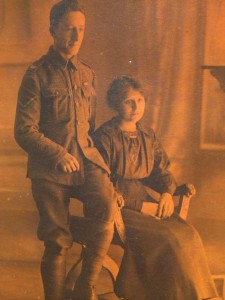 It seems to me the generation that faced down the hardships and horrors of total war in WWI (and WWII) were made of a special kind of stuff.
It seems to me the generation that faced down the hardships and horrors of total war in WWI (and WWII) were made of a special kind of stuff.
Honour; duty to country; grit; courage; sacrifice; determination and resolve are all words that can (as a generalisation) epitomise those generations.
I can’t imagine my own generation being stoic enough to be able to see such things through today. When I look at what they did, how they stuck it out and saw it through despite the personal cost, I feel in awe and have great respect.
So it’s with great pride that, 100 years later, I follow in my great grandfather’s shadow to Mons in Belgium, the scene of the first battle between the British & German Armies, in this centenary year of the outbreak of WWI.
I’ve entitled this blog entry as ‘In the Footsteps of a Hero’ but I’m sure if he were alive today he wouldn’t describe himself as a hero. He would simply see himself as one of a number of young men serving their country and doing their bit. I on the other hand see him and the men he served with as just that – heroes.
MY GREAT GRANDFATHER
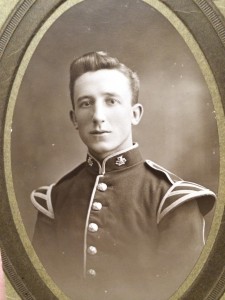 My great grandfather, Lance Corporal Francis Fleming, was a professional soldier in the 2nd Battalion Royal Irish Regiment at the outbreak of war. The 2nd Royal Irish were garrisoned in Guernsey between October 1910 and October 1913 which is where he met and married my great grandmother.
My great grandfather, Lance Corporal Francis Fleming, was a professional soldier in the 2nd Battalion Royal Irish Regiment at the outbreak of war. The 2nd Royal Irish were garrisoned in Guernsey between October 1910 and October 1913 which is where he met and married my great grandmother.
In October 1913 they moved back to Devonport in the UK. It was there on the 4th August 1914, as the Germans rampaged through neutral Belgium, they received orders for full mobilisation for war. He said goodbye to my great grandmother and sailed for France with the B.E.F. on 13th August.
The regiment landed in Boulogne on the 14th August at 6pm where they disembarked and marched 3 miles to a rest camp. The following day at 10pm they entrained for Aulnoye where they arrived on the 16th. They spent some 3 days route marching and training and before moving towards the Belgian frontier. By the 22nd they had moved through the fortress town of Mauberge into Belgium so that by the morning of the 23rd August 1914 his regiment found itself in Mons.
BACKGROUND TO THE BATTLE
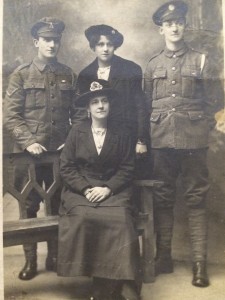 The Battle of Mons marked the first battle between the British & German Armies in the First World War. It was a titanic struggle that threatened to completely overwhelm the small professional British Army in the hot summer of 1914.
The Battle of Mons marked the first battle between the British & German Armies in the First World War. It was a titanic struggle that threatened to completely overwhelm the small professional British Army in the hot summer of 1914.
The BEF, under its Commander-in-Chief Sir John French, planned to meet up with the French Fifth Army near Charleroi. However before reaching Charleroi, the BEF encountered cavalry patrols from the German First Army at Soignies on 22 August. The BEF changed tack overnight, and French ordered his five divisions to establish defensive positions at the nearby Mons Canal, unaware of the full strength and recent victories of the Germany Army facing him. 68,000 Tommies were about to face a tidal wave of nearly 160,000 German troops along with 300 Royal Artillery guns against 600 German. The skill, courage and training of the BEF was to provide vital if this tiny force wasn’t to be overwhelmed.
THE BATTLE IN BRIEF
The initial German action against the BEF, led by the German commander Von Kluck, began on 23rd August 1914 and went disastrously for the Germans, with the British riflemen exacting heavy losses from the advancing German infantry. The efficiency of the British riflemen was such that Von Kluck assumed that the enemy were using machine-guns.
As the Germans approached Mons the Tommies dug in behind every available defensive position, the main one being the Mons-Conde canal that looped around the town to the north. Along the canal itself was The Middlesex regiment – one of the first regiments to meet the Germans head on. Directly behind them and in reserve was the 2nd Battalion Royal Irish who would be tasked with saving the Middlesex by moving up to protect their retreat back from the Canal and through Mons itself. The regiment stayed in action and in contact with the Germans all through the afternoon and the following night, as the BEF extracted itself from encirclement by 3 times their number and almost certain annihilation. The 4th Middlesex and the 2nd Royal Irish suffered around 450 and 350 casualties respectively.
After the initial contact at Mons on the 23rd, Von Kluck then paused the attack in order to draft in reserves. The French Armies to the BEF’s right began a retreat so the British then began a strategic retreat to a second line of defence.
The BEF then began an exhausting retreat back to the River Marne some 250 miles away where the allies would turn and face down the German juggernaut, save Paris and push the German invaders back.
During the retreat the tiny BEF remained in contact with both the French Armies and enemy forces. Discipline and courage saved the BEF from total annihilation. Like Dunkirk 26 years later this was not a victory but a deliverance brought about by the pluck and courage of the British Tommy.
OUR VISIT
Turning back to the action in Mons, the scene was set as 160,000 Germans, all intent on killing my great grandfather, approached him and his 68,000 comrades. Saying they ALL wanted to kill him may be a slight exaggeration – but when you think about it if he hadn’t survived this action or the subsequent slaughter at the battle of Le Cateau 3 days later AND the 250 mile slog of the retreat back to Paris, then my Grandmother & my Mother would never have been born & I wouldn’t be writing this now.
So turning to Mons today and our trip…
Having read the various detailed histories of the battle, particularly with regard to the Royal Irish, it was apparent that we’d need a guide to navigate the streets, lanes and fields that made up the battle, especially as the landscape has changed so much since 1914. We hired a car and managed to arrange a personal guide to take us on a 3 hour tour (that turned into a 4 1/2 hour tour! – thanks to our guide who was enthusiastic and knowledgeable))
The sector that the Royal Irish were in was the Mons Salient(see map above). They were behind the Middlesex regiment in support. To their left was the 4th Royal Fusiliers.
Our tour started along the salient canal line and then moved inwards following the fighting as the BEF withdrew and the RIR came forward to help extricate the Middlesex.
We started at the railway bridge defended by the Royal Fusiliers at the far right hand side of the salient. It was here that no less than 2 VCs were won that day, the first of the war, by Lieutenant Maurice Dease and Private Sidney Godley. They both helped to man 2 machine guns, which had previously been knocked out, whilst covering the bridge and also covering the Fusiliers withdrawal. Dease was wounded 5 times before he was killed and Godley stayed at his post until he was wounded and ran out of ammunition.
We then moved on to the other end of the canal being defended by the Middlesex at the Oburg station.
The Germans were too numerous for the Middlesex to hold and they were eventually pushed back sending out an urgent call to the RIR for support. We then went to a position where the RIR joined the beleaguered Middlesex in front of an old cemetery and mental asylum. As the British were further pushed back a horrifying and rather macabre event occurred when the asylum was shelled by the Germans and caught fire. 400 Mental patients then ran screaming onto the battlefield towards the British lines. Many were sadly killed.
We then moved on to a pivotal crossroads where the RIR faced the Germans alone as the Middlesex had all but ceased to exist as a fighting unit by that time. It was here that the full force of the German assault hit the RIR. They held them off, even bayonet charging the Germans in one counter attack. Later on that day the RIR withdrew again to the south with other regiments on their right covering them. By the end of the 23rd the BEF had reformed its line further south from which the retreat would continue for another 250 miles to Paris when they would turn, along with the French, and beat back the Germans at the battle of the river Marne.
We thankfully didn’t carry on our tour that far! but then went to the Commonwealth Cemetery at St Symphorien. Here we saw graves from all the regiments taking part in the action and, very unusually, German soldiers too. The RIR graves were particularly poignant. Maybe these were men that my Great Grandfather knew or had even carried off the battlefield, because being a bandsman one of his roles would have been to act as a stretcher bearer as well.
FINAL THOUGHTS
My Great Grandfather died in 1969 when I was only 6 months old so I never got the chance to chat to him about his experiences, something I really wish I could do.
Whether he would have talked to me about his experiences is another matter. His generation was famously tight lipped when it came to talking about their horrific experiences in the trenches. It was something only those who’d experienced it could ever understand and besides it just was “not done”. You simply ‘buckled up’ and got on with it, dealing with it behind closed doors or only discussing it with fellow members of that exclusive club who experienced it all.
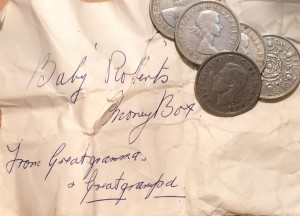 My Mother tells me he was a gentle and loving man – a real Grandpa who played with and read stories to both her and her brother.
My Mother tells me he was a gentle and loving man – a real Grandpa who played with and read stories to both her and her brother.
I still have an envelope with my Great Grandmother’s handwriting on it that says “For Baby Robert’s Money box, From Great Grandma & Great Grandpa” – in it was 10 shillings (which I still have today)
My Great Grandmother didn’t pass away until 1985 and if my Great Garndfather had confided anything to her of his experiences then I could have asked her, but alas I was either too stupid or unaware that I had a golden opportunity to discuss things that a previous generation had endured that was way beyond my own understanding and experiences.
So if there’s one thing we should learn it is this – that we should talk to and learn as much as we can from the older generation. Dig in to their personal memories and experiences.
We can always learn what happened from a history book but not what it felt like, what the myriad of personal experiences that surround key historic events were – what it meant to be alive at that time and participate in the unfolding human story that history ultimately is.

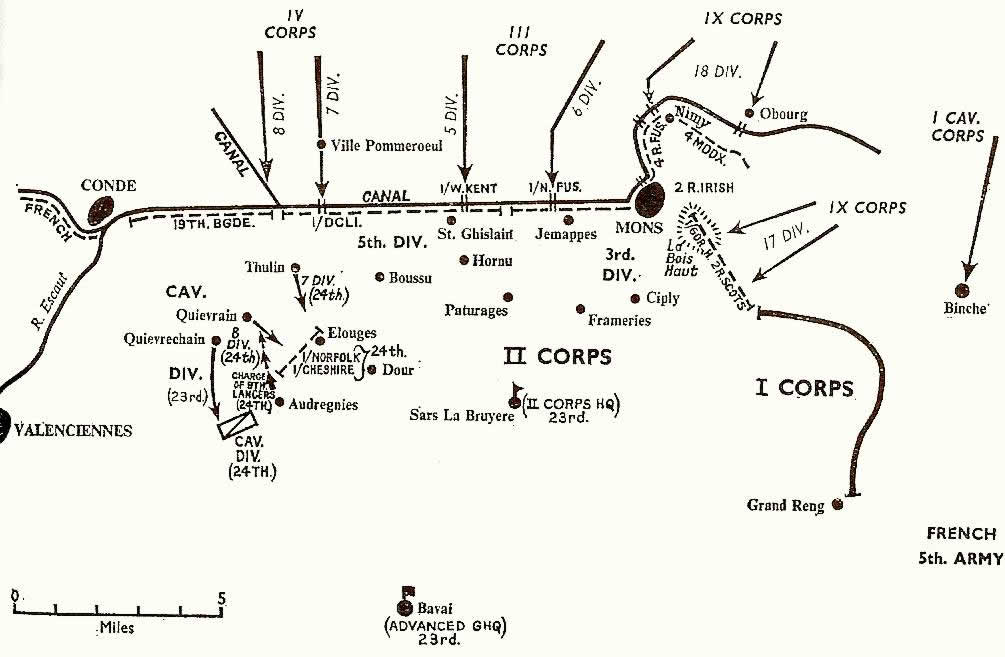
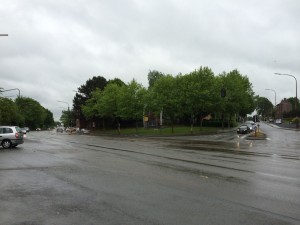
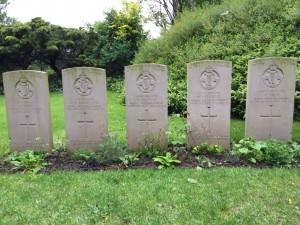


You must be logged in to post a comment.